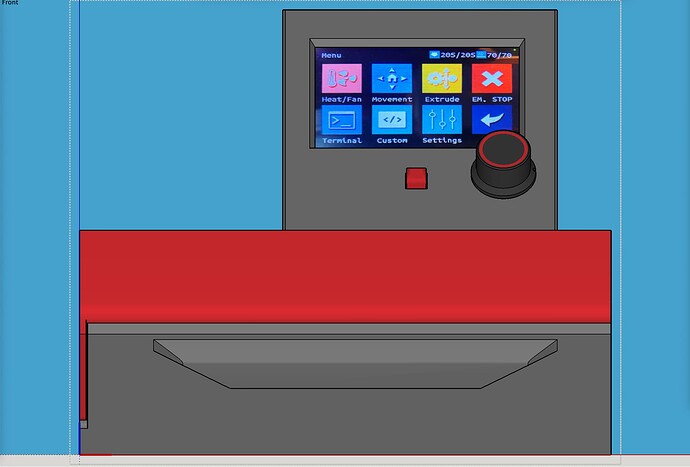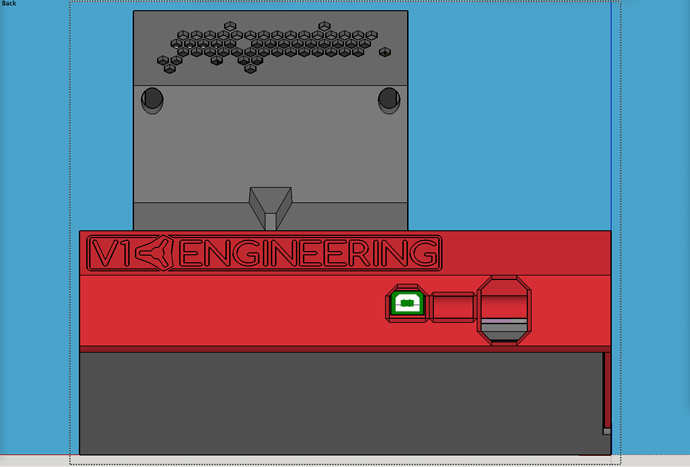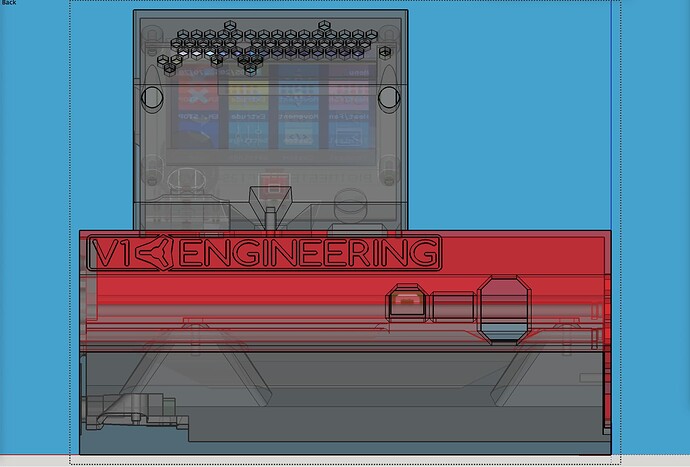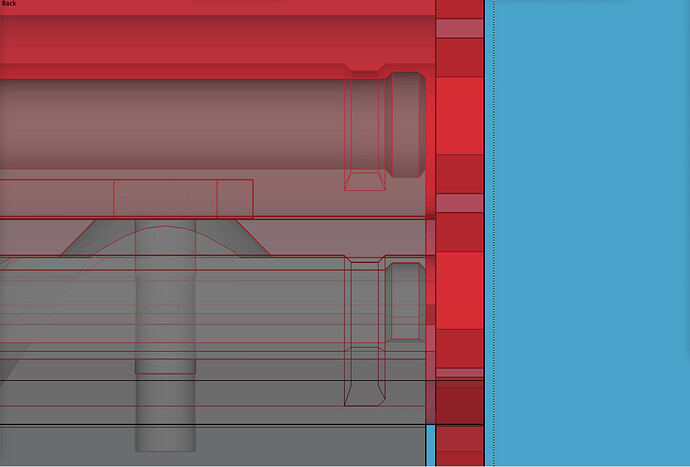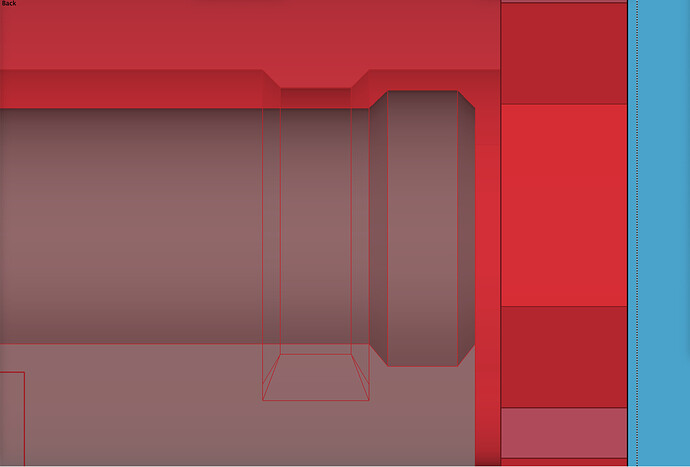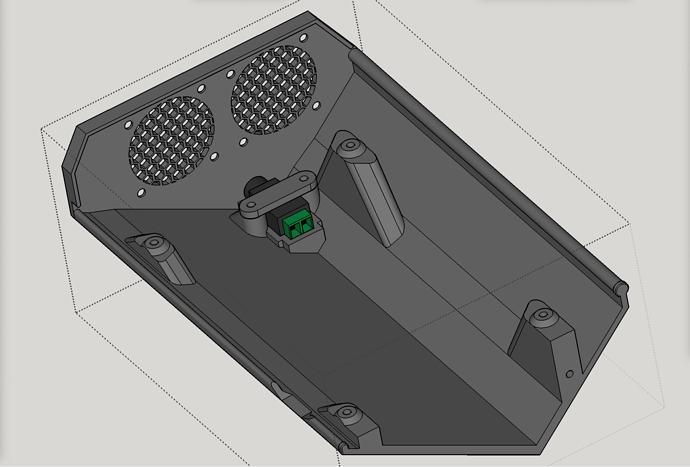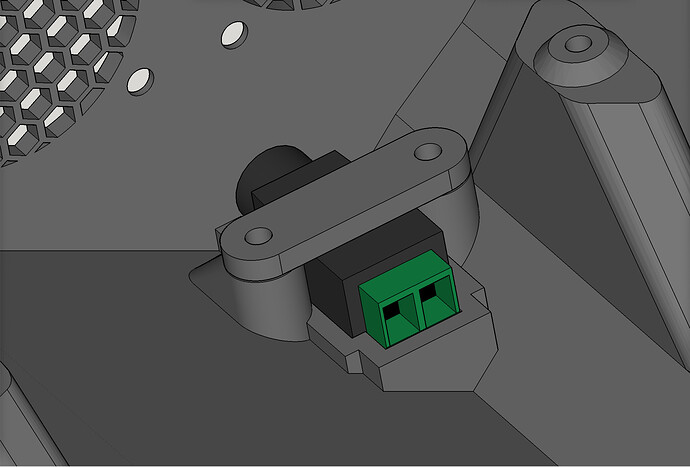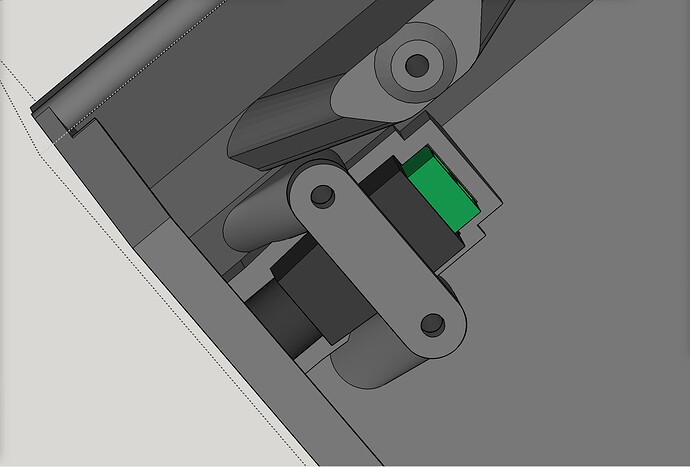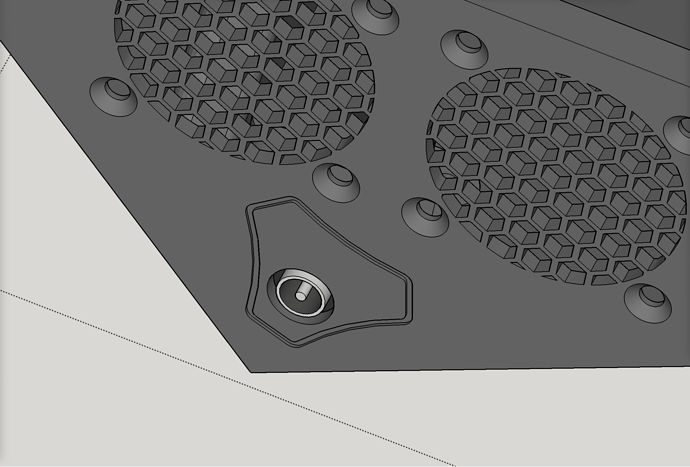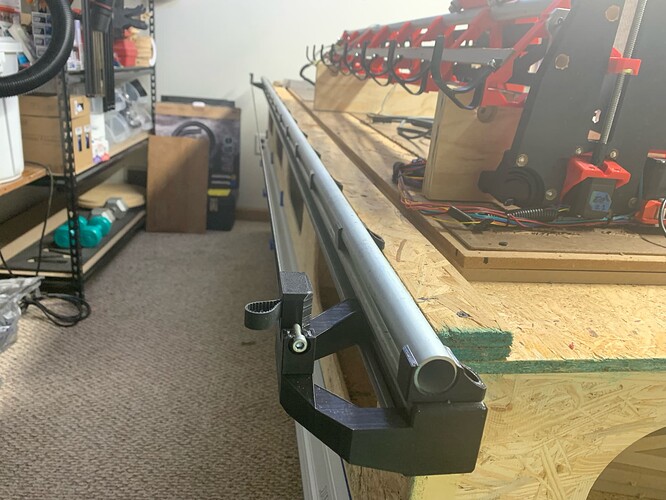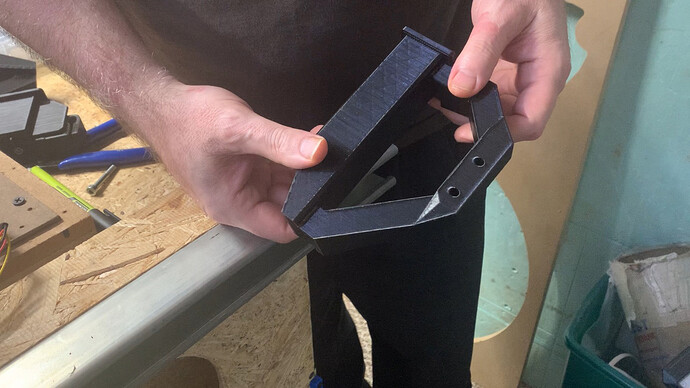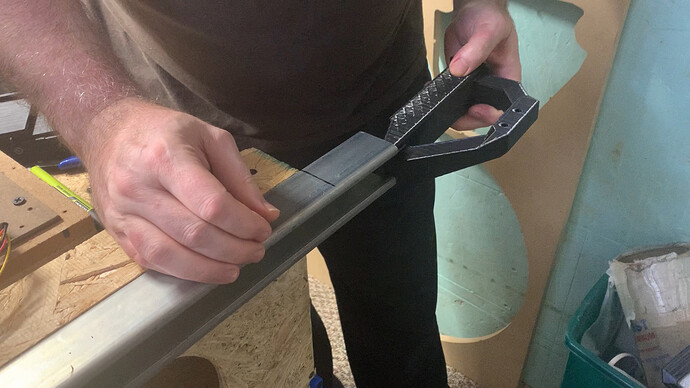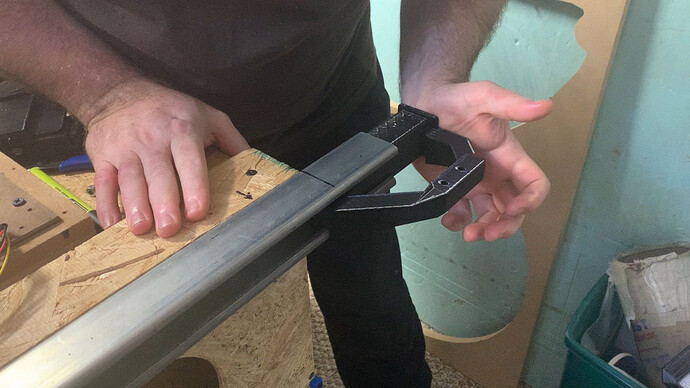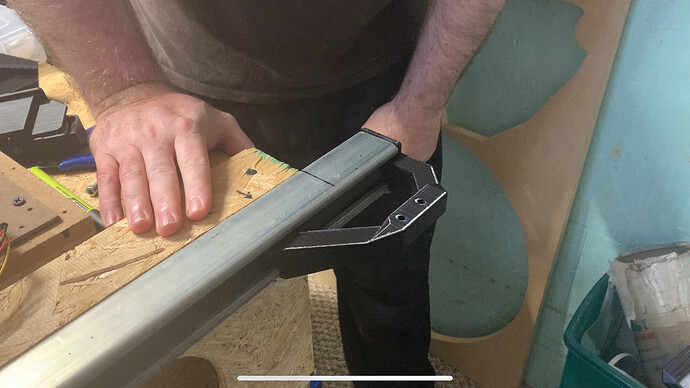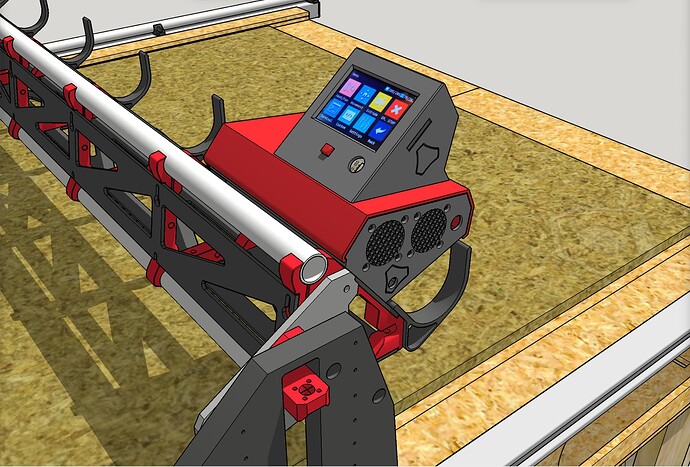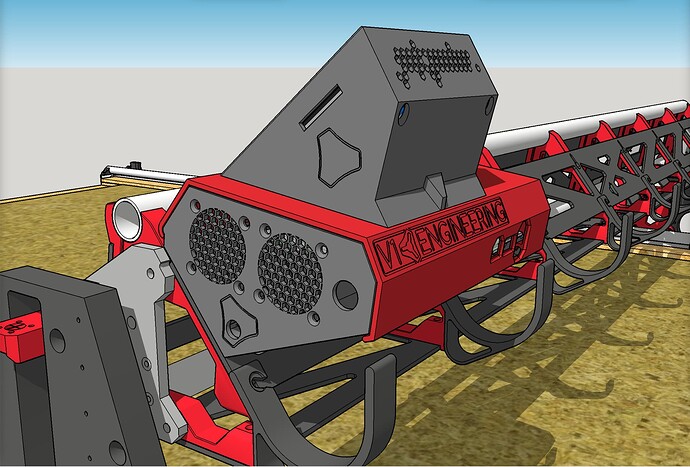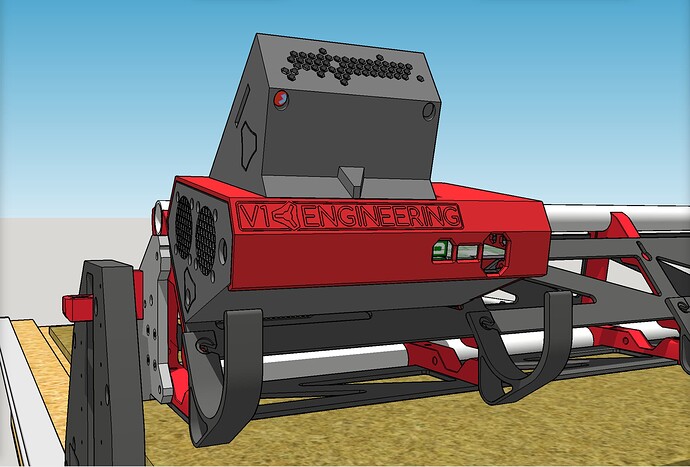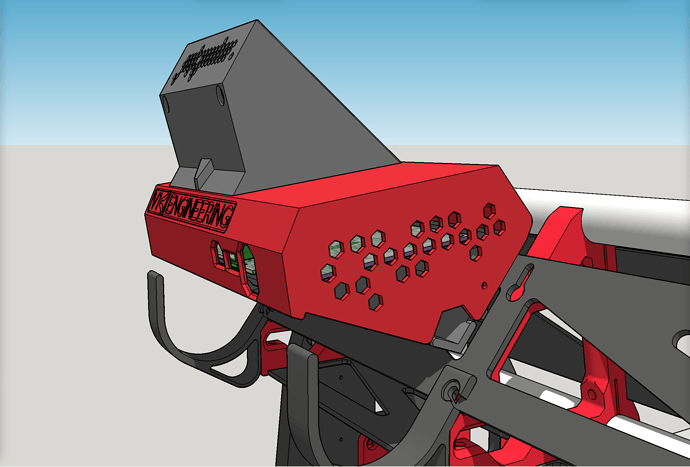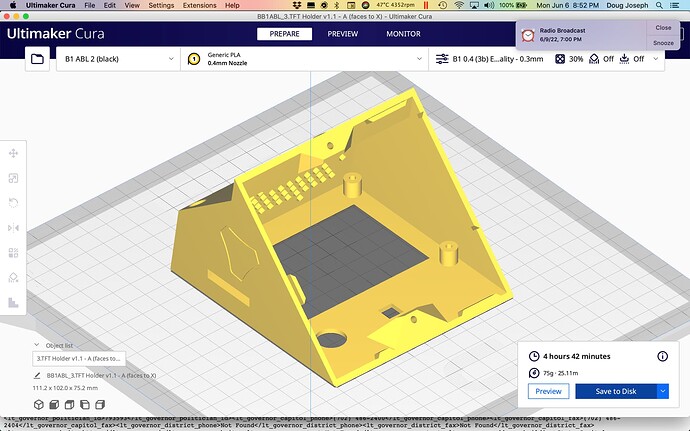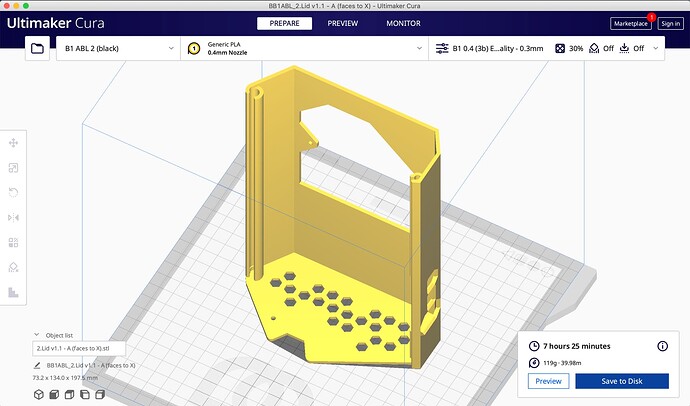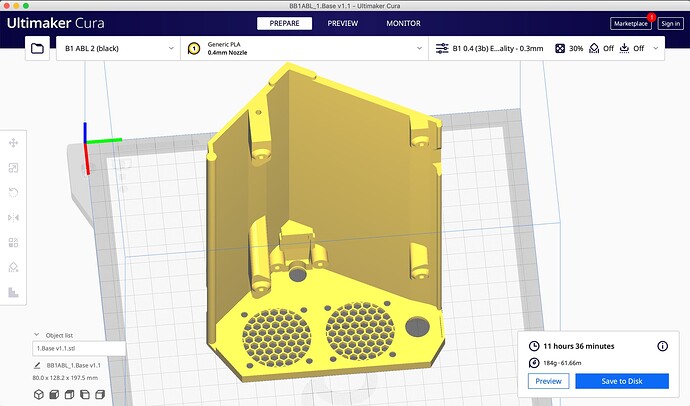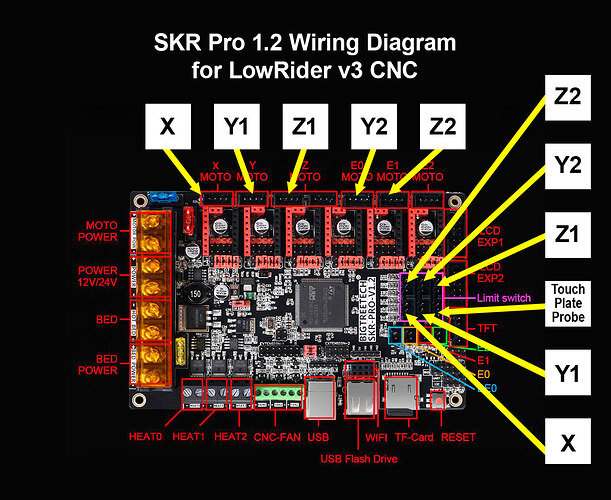I’m trying a little something on the case. A “snap in place” touch. On the two “rails” on the base that slide into tracks on the lid, I added 0.35mm bulbs, and corresponding ridges inside the tracks on the lid to constrain when the bulbs snap in. Will let you know how it goes. Should have some prints in due time. Here are screen shots to get context and then zoom in:
More screen shots of 3D modeling for my remix of the V1 case CAD files to suit SKR Pro 1.2 main board and BTT TFT35-E3, this time showing the DC connector “sled” and “clamp” - and the exterior view where the power cord plugs in.
Got my Y rail installed on my metal strut. Drilled and tapped the holes. Pleased with how it came out. Case parts for my SKR Pro 1.2 and TFT are almost done printing.
It looks terrific - I think you “know” me well enough to know that when I say I was thinking of doing similarly - I was! (without the strut). I think the “brace” really looks as though it’s part of the machine.
I suspect in the end I will extend the table in both directions or quite possibly even simply build a new one which might actually involve less work.
I went ahead and posted my …
LowRider 3 CNC - table extenders to use LR2 table (with metal struts) with LR3 - endstop/tensioner supports
They look great!
Looks great, I’ll anxiously await the printables. Thank you. 
@MisterAmerican
Hey, if you are meaning these:
LowRider 3 CNC - table extenders to use LR2 table (with metal struts) with LR3 - endstop/tensioner supports
…The link I posted above should be clickable to the Printables download page. Same here in this post too. Let me know if that’s what you were meaning and if you’re having any difficulty.
I got out a brand-new bit, 2-flute, up-cut, flat end mill, and still had tear out like crazy when cutting this 1/8” thick hardboard. I used a 1 mm depth of cut. This happened for me both on the LowRider 2 and the LowRider 3.
Up cut will always tear out the top. Need a down cut to prevent that. Just have to be careful with cut starts, since for a bit there’s nowhere for the chips to go. Ramp into cuts work to fix that.
Cut deeper. I am running 13mm DOC (single flute upcut) and the “tear out” on mine comes off when brushed with your hand.
I think 4 mm or so would keep the slots from packing with chips, but I will try that another day.
@barry99705
Thanks. I will check to see if I have a 1/8” bit that is not upcut.
@vicious1
Thanks. I guess I could cut these struts out of 1/8” hardboard in a single pass instead of multiple passes. I think what Barry said about not using an up-cut bit may help too.
Planned changes to my SKR board case remix:
@vicious1
I got my SKR case done and after putting it together I realized that I would rather the lid not have a hole for cables but rather just stop short and leave an opening at the bottom, because as it is I had to route the wires through the lid before the lid was in place and then slide the lid on the wires to put it in place, and since my wires are inside a plastic wire hose which is a little too big for the hole it was a pain to put it in place. Then I had to take it apart and put it together a couple of times to get my motor directions right, and I’m gonna still have to take it apart and put it back together once I get to checking the end stops. So I think instead of having a hole in the lid for cables, I will just have basically an opening that leaves a gap at the edge so it’s more like a hollow place that allows the lid to the installed and removed without having to slide it along wiring.
Also, I’m going to turn the TFT holder back to same orientation as on my previous box on my LR2. That one had X- and X+ oriented with X axis, and Y- and Y+ oriented with Y axis. This one, as is, has them perpendicular, and although I can account for it in my mind, it make things slightly annoying. Plus, with my table designed like it is, accessing the buttons is not easy when I am standing on the X axis end of the table (screen is facing out away from me then). A 90 degree turn will correct all this.
Report on “snap in place" lid feature I created on SKR case:
@vicious1
Above I posted about the “snap in place" feature I tried out. Reporting back that it works great. The very first time you snap it in/out, it seems too hard to snap, but as you know, PLA will give way a little, and by about the third or so snap in, it works as intended, and so I think 0.35mm for the bulge and the corresponding lip is just about right. I like this feature and will be keeping it.
Screen shots of revised remix of V1 case CAD files for holding SKR Pro 1.2 main board & BTT TFT35-E3
LR3 control box case for SKR Pro 1.2 with TFT35 E3 — based on V1’s Blank Case CAD files
FREE STL FILES AVAILABLE HERE: Printables
…this time showing that I’ve turned the touch screen back like I had it facing on my LowRider 2 setup.
I feel I am close to being ready to share these on Printables.
My newly revised case lid is now printed. Hope to assemble soon.
Also, just for a record here in my history, and that may be a help to someone else…
LowRider 3 Dual End Stop board pins while using pre-configured firmware (“V1CNC_SkrPro_DualLR_2209-2.0.9.2”) for SKR Pro v1.2 — Dual End Stops for LowRider
This is the pin configuration that finally worked for my end stops:
| End Stop | Connected to |
|---|---|
| X | X min |
| Y1 | Y-min |
| Z1 | E2 |
| Y2 | E1 |
| Z2 | E0 |
And here is a graphic illustrating it:
Downcuts have their own quirks. They pack the chips into the cut, so you tend to need to move at a different pace. and can tear out the bottom if not held in place firm enough (thin material).
